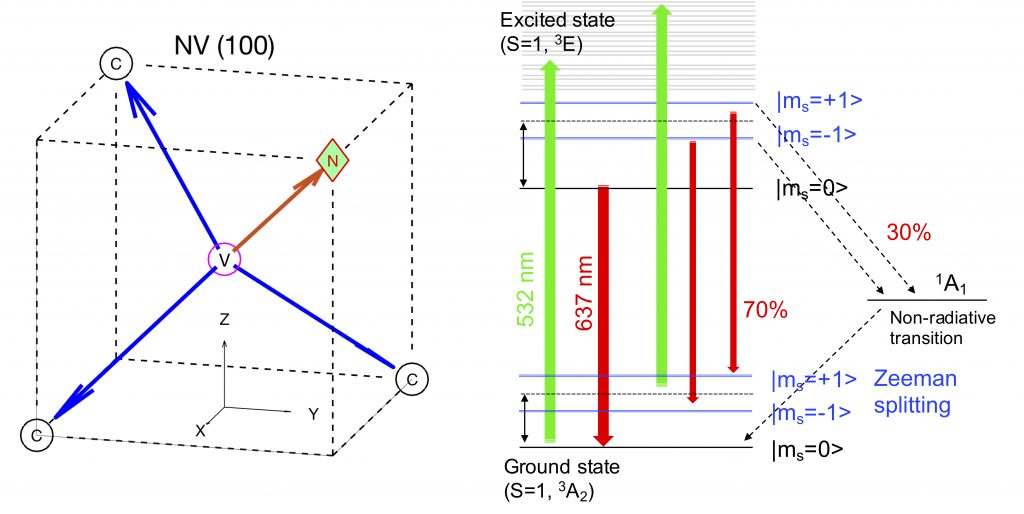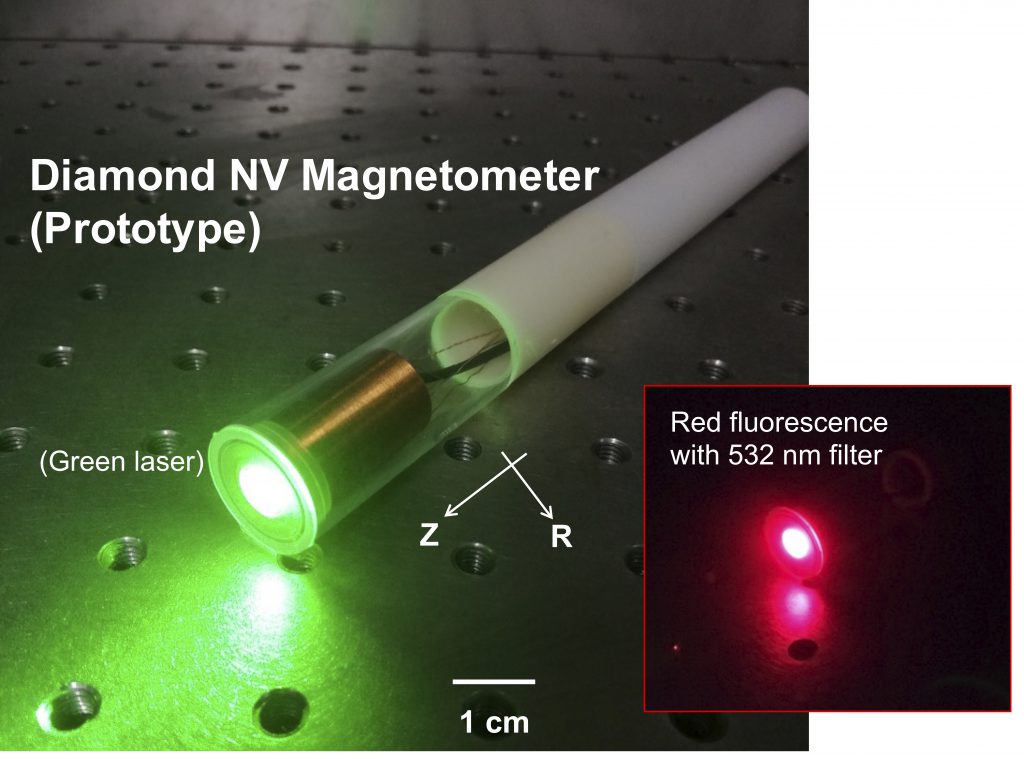生体計測・医工計測技術において、まず、伝えるべきことは、「人間の生命活動は、磁場によって全て表現できる」ということです。神経細胞内の様々なイオンの移動によって、生体内の電位が変化し、電流が流れることによって、我々は生命活動を維持しています。そして、生体内に流れる電流は磁場を生成します。この生体から発生する「磁場を計測する」ことで生命活動の全てを解明することができます。
本来、ダイヤモンドは炭素原子が規則正しく整列した原子構造ですが、炭素の一部を人為的に操作することによって、炭素を「窒素」に置換し、かつ炭素を弾き飛ばすことで「空孔」を生成することができます。この「窒素-空孔のペア」において、電子が一つ余ることとなり、電子スピンが生じます。この電子スピンを応用し、緑色光によって励起された赤色蛍光で表現できる量子状態を観測することで、超高感度に、様々な生体の磁場を計測することが可能となります。世界中で、「量子生命」という新しい学術分野を開拓するために、量子力学、生命科学、医工学、電気工学、磁気工学、光学を融合した研究活動が盛んに行われています。
本研究室では、ダイヤモンドの窒素-空孔のペアを用いた量子磁気センシング技術を用いることで、がん細胞の転移診断に関する革新的な医療機器の開発に取り組んでいます。従来は不可能であった「がん細胞・がん転移の空間的磁場分布」を計測することで、がん診断・がん治療へと貢献することを目標としています。
これまでの成果として*、乳がん転移診断のための「ダイヤモンド磁気プローブ」を開発しました。世界に先駆けて、がん転移診断用の磁気プローブへとダイヤモンドを搭載し、がん転移診断に使用されている磁気ナノ粒子の検出に成功しています。さらなる発展として、より高感度でかつ、がん転移に関する3次元空間分布の情報を得るために、新しい磁気プローブを開発しています。乳がんだけでなく、胃がん、子宮がんなどの様々ながんへと適応症例を拡大し、がん患者の術後の生活の質の向上、ならびに基礎医学への貢献のために研究を進めています。
*本研究成果は、Nature関連の学術雑誌「Scientific Reports」に掲載され、2021/05現在、「Top 100 in Physics」の上位(top 10)にランキングされています。
https://www.nature.com/collections/ihggebhehd
https://www.nature.com/articles/s41598-020-59064-6
A. Kuwahata et al., Scientific Reports 10, 2483 (2020)


